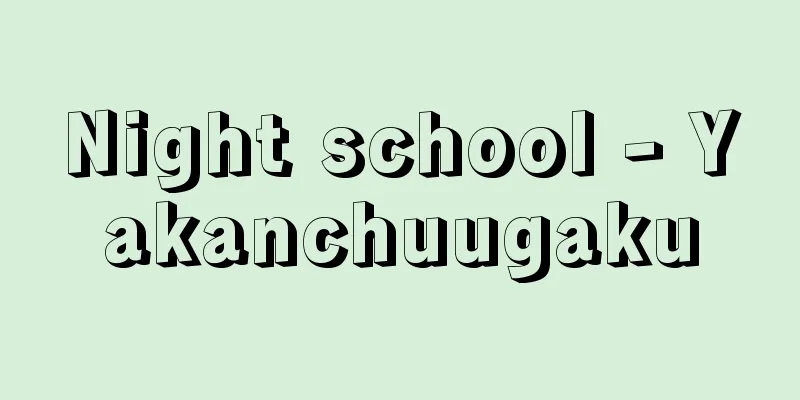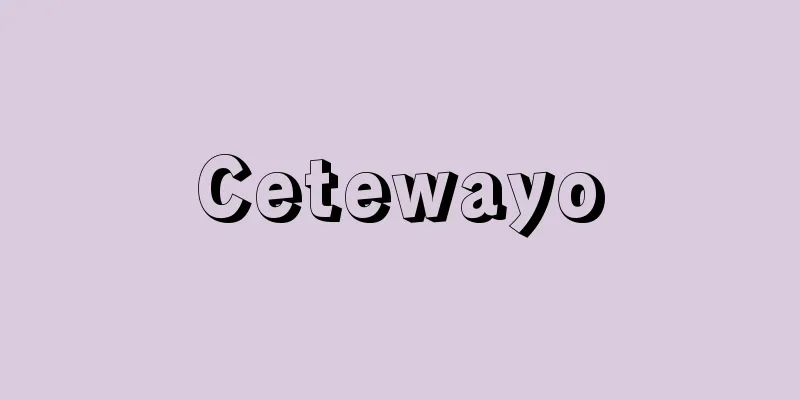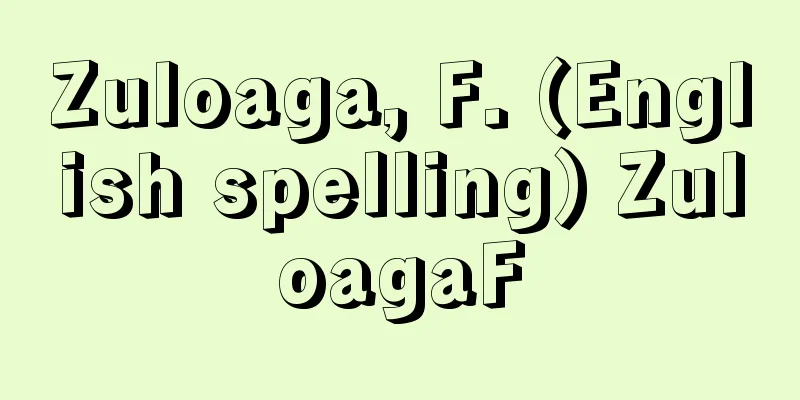Night school - Yakanchuugaku

|
A night school is a school that aims to allow those who did not complete junior high school for some reason (such as not attending school during their school years, long-term absences, or having exceeded school age before the implementation of the new school system) to complete junior high school by opening night classes. Since its days as the Ministry of Education, Culture, Sports, Science and Technology, the principle has been that junior high school as compulsory education must be attended during the day, and the existence of night schools has not been officially recognized because it could encourage parents to not fulfill their schooling obligations. Therefore, night schools are not institutionalized schools, but are schools that actually exist (they do provide qualifications for graduation). For some time after the new education system was launched in 1947 (Showa 22), and the new junior high schools were established to provide three years of extended compulsory education, the material lives of the Japanese people were extremely miserable. In some cases, junior high schools themselves were unable to secure independent school buildings or teachers, and children from poor families were forced to not attend school or to be absent for long periods of time in order to make ends meet. The first night junior high school was born out of the educational passion of a teacher at Kobe Municipal Komagabayashi Junior High School, who wanted to provide a junior high school education to such students (it was established in February 1949 as the "Class for Relief of Long-Absent and Non-Attending Children and Students" at the school). In Tokyo, a night junior high school was opened at Adachi Ward Fourth Junior High School in 1951. The Tokyo Metropolitan Board of Education approved this, but the Ministry of Education at the time expressed opposition to the establishment of night schools on the grounds that (1) they were not permitted by the School Education Act, (2) they were a violation of the Labor Standards Act, (3) they would encourage national and local governments and parents to fail to fulfill their obligations to send school-age students to school, (4) they would be harmful to students' health, and (5) they would not be able to provide a satisfactory education in all junior high school subjects. However, the movement to establish night schools spread throughout the country, and at its peak in 1955 there were 81 schools with 4,900 students. The number of night schools decreased as people's lives improved, but in 1966, the Administrative Management Agency (the Management and Coordination Agency from 1984, the Ministry of Internal Affairs and Communications from 2001) recommended the early abolition of night schools, which led to a rise in the movement to protect the people's right to learn, and since then, they have played a role in compensating for the elderly and those who are not fully enrolled in junior high school (by accepting students who are not attending school, etc.) (As of April 2017, 1,687 students were enrolled in 31 schools in 25 cities and wards in 8 prefectures). Night schools have also been opened to teach Japanese language to orphans left overseas who have returned to Japan and foreigners living in Japan. As long as there are no other systems to meet these educational needs, the virtual existence of night schools should not be eliminated, but encouraged. [Toshiaki Kuwabara May 21, 2018] In addition, the Act on Assurance of Educational Opportunities (Act No. 105 of 2016) was fully implemented in February 2017, and the Ministry of Education, Culture, Sports, Science and Technology has stated that it will provide support to ensure that at least one night school is established in each prefecture. [Editorial Department, May 21, 2018] "Research on Nighttime Middle Schools and Part-time High Schools" by Ogata Toshio and Nagata Mitsuo (1967, Azekura Shobo) " ▽ "Nighttime Middle Schools - The Hollowing Out of Compulsory Public Education" by Yamamoto Minoru (1969, Meiji Tosho Publishing)" ▽ "Nighttime Middle Schools - Their History and Present" by Matsuzaki Unnosuke (1979, Shiraishi Shoten) " ▽ "Nighttime Middle Schools Exist! - Why Do People Study? School Hymn Booklet" by Matsuzaki Unnosuke (2002, Kamogawa Publishing)" ▽ "Nighttime Middle Schools in Modern Japan" by Mikami Atsushi (2005, Hokkaido University Press)" ▽ "Nighttime Middle Schools - Messages from 133 Students" edited by the Executive Committee of the 51st National Nighttime Middle School Research Association (2005, Toho Publishing) [References] | | | | | |Source: Shogakukan Encyclopedia Nipponica About Encyclopedia Nipponica Information | Legend |
|
なんらかの理由(学齢期間中の不就学や長期欠席、新学制実施以前に学齢を超えていたなど)で中学校を修了しなかった者に対し、夜間に学級を開設して、彼らに中学校を修了させることを目的とする学校。文部科学省は、文部省時代から、義務教育としての中学校は昼間就学の原則にたち、夜間中学の存在は保護者の就学義務不履行を助長しかねないなどの理由により公認していない。したがって、夜間中学は制度化された学校ではなく、事実上存在する学校である(卒業資格は与えている)。 新学制の発足、したがって3年分延長された義務教育を担当する新制中学校が発足した1947年(昭和22)からしばらくの間、日本国民の物質的生活はきわめて悲惨なものであった。中学校自体が独立の校舎や教師を確保できない場合もあり、貧困家庭の子弟は、生活のために不就学や長期欠席を余儀なくされた。最初の夜間中学は、そのような生徒にこそ中学校教育を与えたいとする神戸市立駒ヶ林中学校の教師の教育的情熱から生まれた(1949年2月、同校「長期欠席・不就学児童生徒救済学級」として設立)。また東京では1951年、足立(あだち)区立第四中学校に開設された。これを認めた東京都教育委員会に対して、当時の文部省は夜間中学について、(1)学校教育法で認められていない、(2)労働基準法違反に通じる、(3)国・地方公共団体および保護者の学齢生徒を就学させる義務の不履行を助長する、(4)生徒の健康を損なう、(5)中学校の各教科にわたって満足な教育ができない、との理由から反対意見を表明したが、夜間中学設置の動きは各地に広まり、ピークの1955年には81校、生徒数4900人に達した。その後国民生活の改善に伴い減少したが、1966年の行政管理庁(1984年より総務庁、2001年より総務省)の夜間中学校早期廃止勧告を契機に、国民の学習権を守る運動として隆盛に向かい、その後は高齢者や不完全就学者の中学校教育を受ける権利の未行使分を補償する機能(不登校生の受け入れなど)を果たしている(2017年4月時点で8都府県25市区31校に1687人が在籍)。また、日本に帰国した海外残留孤児や在日外国人などに対する日本語教育を施す夜間中学も開設されている。これらの教育ニーズにこたえる制度がほかにない限り、夜間中学という事実上の存在は抹消されるべきことではなく、奨励されるべきことであろう。 [桑原敏明 2018年5月21日] なお、教育機会確保法(平成28年法律第105号)が2017年(平成29)2月に全面施行され、文部科学省は、少なくとも各都道府県に1校は夜間中学が設置されるよう、支援を行うとしている。 [編集部 2018年5月21日] 『尾形利雄・長田三男著『夜間中学・定時制高校の研究』(1967・校倉書房)』▽『山本実著『夜間中学――義務制公教育の空洞化現象』(1969・明治図書出版)』▽『松崎運之助著『夜間中学――その歴史と現在』(1979・白石書店)』▽『松崎運之助著『夜間中学があります!――人は何のために学ぶのか 学校讃歌ブックレット』(2002・かもがわ出版)』▽『三上敦史著『近代日本の夜間中学』(2005・北海道大学図書刊行会)』▽『全国夜間中学校研究会第51回大会実行委員会編『夜間中学生――133人からのメッセージ』(2005・東方出版)』 [参照項目] | | | | | |出典 小学館 日本大百科全書(ニッポニカ)日本大百科全書(ニッポニカ)について 情報 | 凡例 |
<<: Night Flight - Vol de Nuit
Recommend
communication intelligence
...For example, by knowing the type and performan...
Edinal - Edinal
…Author of the Vita Caroli Magni. Latin name Egin...
American wigeon
A bird of the family Anatidae in the class Aves. ...
Senlis (English spelling)
A town in the Oise department in the Valois region...
Production price - price of production (English)
With the establishment of average profits, goods ...
Ratufa
...The smallest is the African pygmy squirrel Myo...
Shigenori Asuke
A samurai from the late Kamakura period. He was f...
Star of Bethlehem
...The flowers are mostly white, with thick petal...
Gondal - Gondal (English spelling)
A city in northwestern Ethiopia. It is located at...
Katzenmusik - Katzenmusik
…The origin of the French word “charivari” is unc...
Iris kamayama - Iris kamayama
...Cultivars include the pale yellow Bastardi, as...
Deposit land - Azukarichi
It means land entrusted to someone else for manage...
Amapo - Amapo
...These workplaces are collectively called "...
Rest mass
In relativistic mechanics, the mass of a moving ob...
African manatee
...Except for Australia, it is a protected specie...









